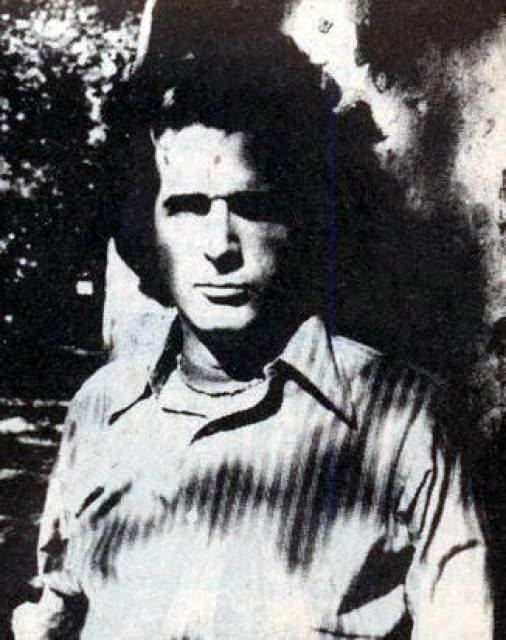Nationality American Role Writer Name Michael Fleisher | Area(s) Writer | |
 | ||
Born Michael L. Fleisher November 1, 1942 (age 82) ( 1942-11-01 ) Books The encyclopedia of comic, Chasing Hairy, Kuria Cattle Raiders, Showcase Presents, The great Superman book Similar People Jim Aparo, Tony DeZuniga, Don Perlin, Robert Kanigher, Jose Luis Garcia‑Lopez | ||
Michael Lawrence "Mike" Fleisher (born November 1, 1942) is an American writer known for his DC Comics of the 1970s and 1980s, particularly for the characters the Spectre and Jonah Hex.
Contents
Early life and career
Michael Fleisher, the half-brother of champion bridge player Martin Fleisher, was raised in New York City. His parents divorced when he was four years old, and Fleisher developed the foundation of his later Western writing by spending Saturdays with his visiting father at Western movie double features. "I saw two Westerns ever Saturday for years," Fleisher recalled in 2010. "So it wasn't very hard to write [Westerns] at all."
Fleisher wrote three volumes of The Encyclopedia of Comic Books Heroes, doing some research onsite at DC Comics. He started comic book scripting in 1972, co-writing with Lynn Marron the full-issue supernatural story "Death at Castle Dunbar" in DC's Secrets of Sinister House #5 (July 1972). He co-wrote supernatural short stories with Maxene Fabe in DC's House of Mystery, and a solo story in the companion title House of Secrets #111 (Sept. 1973). Collaborating with Russell Carley, who provided art breakdowns Fleisher's scripts, Fleisher wrote seven stories for those titles and Forbidden Tales of Dark Mansion late in 1973. Fleisher scripted the Steve Ditko-created Shade, the Changing Man series in 1977-1978. Fleisher made several contributions to the Batman mythos in the early 1980s. He reintroduced the Crime Doctor in Detective Comics #494 (Sept. 1980), co-created the Electrocutioner in Batman #331 (Jan. 1981), and wrote the origin of the Penguin in The Best of DC #10 (March 1981).
The Spectre
After becoming, variously, an assistant editor and an associate editor under Joe Orlando on the DC humor series Plop! and the superhero anthology series Adventure Comics, Fleisher, with Carley's script-breakdown assistance, began writing the feature "The Spectre" in the latter title. Beginning with the 12-page "The Wrath of ... the Spectre" in issue #431 (Feb. 1974), Fleisher and artist Jim Aparo went on to produce 10 stories of the supernatural avenger through issue #440 (July 1975) (without Carley's assistance toward the end) that became controversial for what was considered gruesome, albeit bloodless, violence. As comics historian Les Daniels observed, the character, created during the 1940s Golden Age and briefly revived in the late 1960s,
...got a new lease on life after Orlando was mugged and decided the world needed a really relentless super hero. The character came back with a vengeance ... and quickly became a cause of controversy. Orlando plotted the stories with writer Michael Fleisher, and they emphasized the gruesome fates of criminals who ran afoul of the Spectre. The Comics Code had recently been liberalized, but this series pushed its restrictions to the limit, often by turning evildoers into inanimate objects and then thoroughly demolishing them. Jim Aparo's art showed criminals being transformed into everything from broken glass to melting candles, but Fleisher was quick to point out that many of his most bizarre plot devices were lifted from stories published decades earlier."
Jonah Hex
Fleisher wrote DC Comics' Jonah Hex character for more than a dozen years, beginning in 1974 in Weird Western Tales (taking over from the character's creator, John Albano), then from 1977 to 1985 in the character's self-titled comic. A sequel series, Hex (1985–1987) transported the character into a postapocalyptic setting, making him the lead in a science-fiction feature.
Controversy and later career
Writer Harlan Ellison in a 1979 interview praised Fleisher's comics work, while also describing Fleisher and his work as "crazy", "certifiable", "twisted", "derange-o", "bugfuck", and a "lunatic". He also claimed that a Publishers Weekly review called Fleisher's novel Chasing Hairy "the product of a sick mind", and that Fleisher's Spectre run on Adventure Comics had been discontinued by DC Comics because the company "realized they had turned loose a lunatic on the world." While Ellison stated that some of what he was claiming was said "in some humor", Fleisher, saying his "business reputation has been destroyed" and believing he was falsely portrayed as insane, filed a $2 million libel suit against Ellison, publisher Gary Groth and the magazine in which the interview appeared, The Comics Journal. The case came to court in 1986, and resulted in a verdict for the defendants.
Afterward, Fleisher attended college in New York City from 1987 to 1991, while also writing for the British comics magazine 2000 AD. Leaving the comics field that year, he moved to Ann Arbor, Michigan for graduate school at the University of Michigan, spending from 1994 to 1996 researching his Ph.D thesis on commercialized cattle theft in Tanzania while living for two years near Nairobi. He then spent a year in New York writing his dissertation and earned a doctorate in anthropology. Since 2002, he has worked as a "freelance anthropological consultant carrying out research assignments for humanitarian organizations in the developing world."
